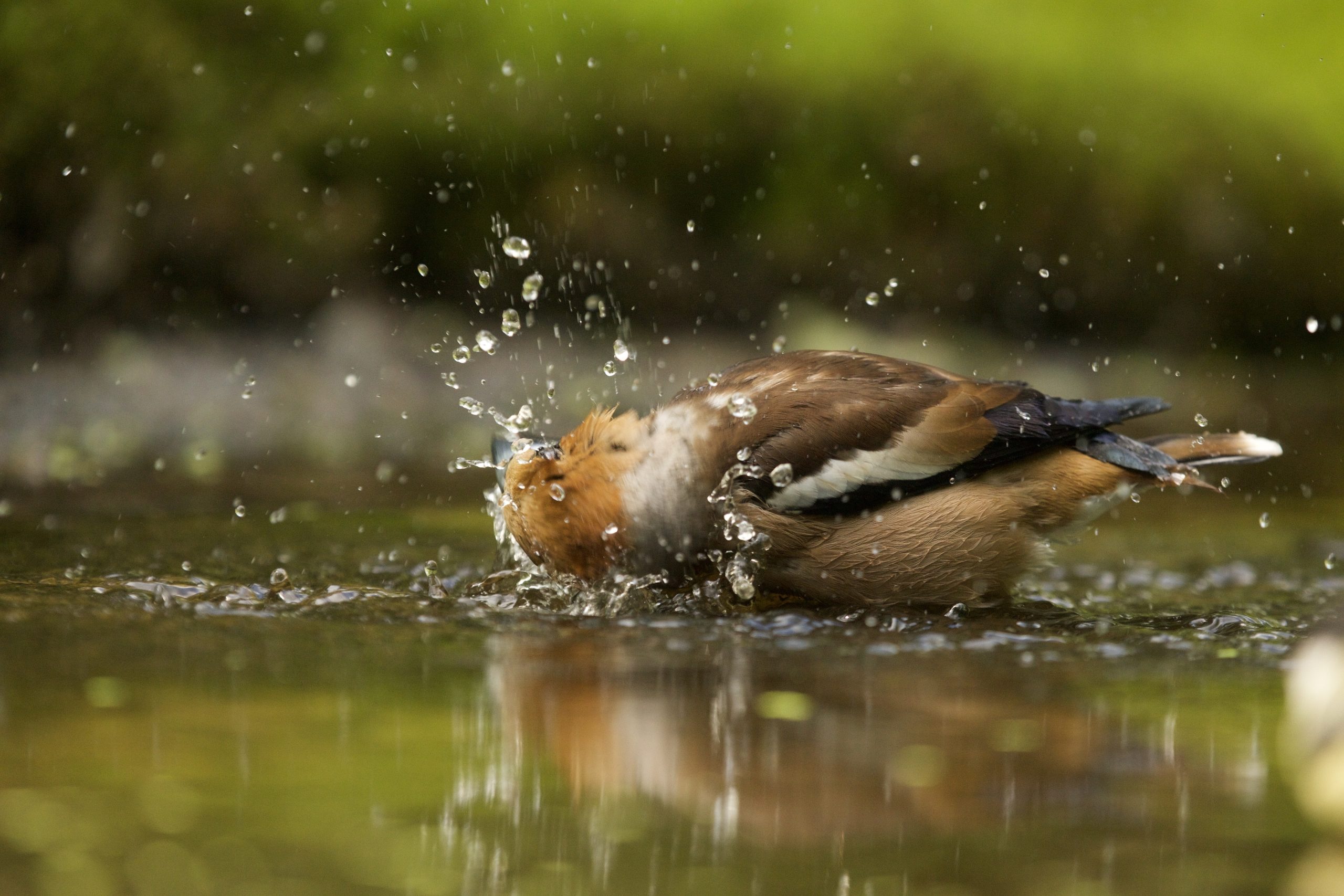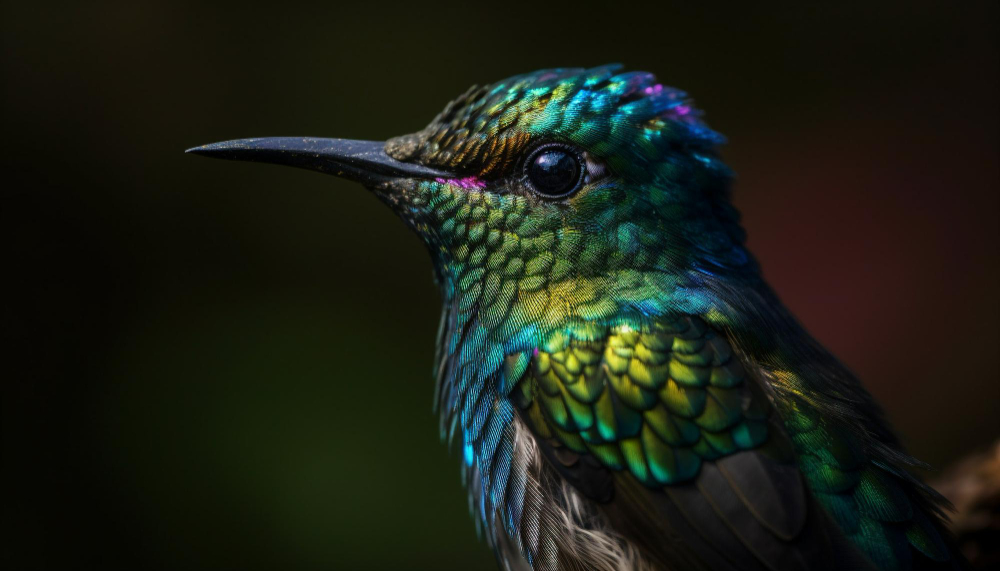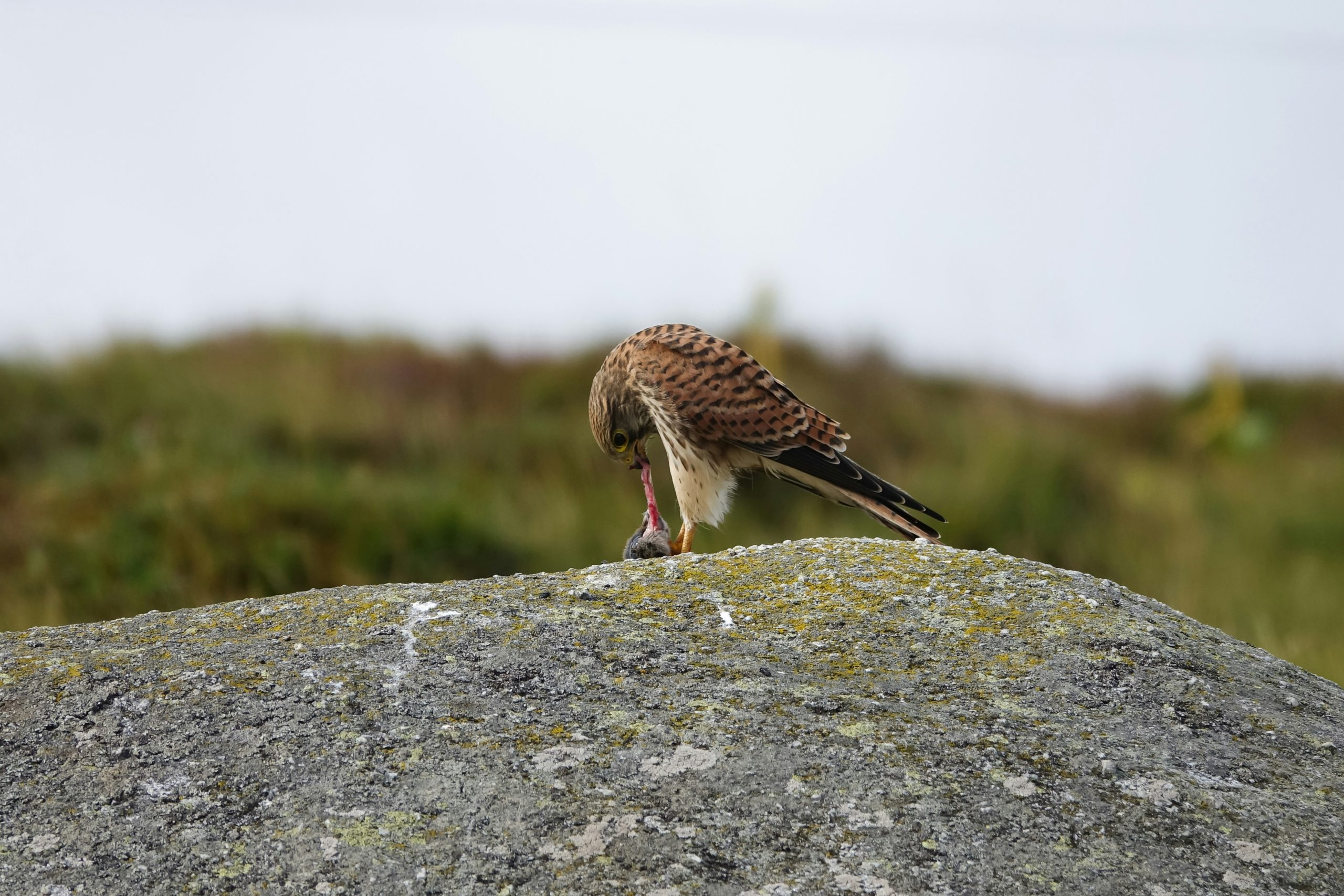For bird enthusiasts, few sights are more delightful than witnessing our feathered friends indulging in a refreshing bath. What Time of Day Do Birds Bathe? Allow us to provide clean water that aids backyard birds in staying healthy, hydrated, and clean. But when do birds prefer to take a dip? Their bathing habits follow distinct daily and seasonal rhythms.
Observing bird bathing behavior provides fascinating glimpses into avian cycles. This article explores the prime times different species like to bathe and the key factors that influence their aquatic activities. Read on to learn more about when your airborne visitors are most likely to make a splash and understand their bustling bathing schedules! Whether you are an avid birder or simply enjoy watching nature unfold, discovering the nuances of birds’ bathing patterns will grant you newfound insight and appreciation for the wildlife in your midst.
Understanding Avian Ablutions: The Appeal of Birdbaths
For bird enthusiasts, few sights delight more than the avian ablutions of our feathered friends. Birdbaths allow us to provide clean water that aids birds in staying healthy and clean. They simulate the natural pools and puddles birds seek out in the wild while offering a safe space for drinking and bathing. As backyard birding grows in popularity, an increasing number of people are discovering the joys of watching birds bathe and understanding their bathing habits. But what is the ideal time of day for our avian visitors to enjoy a refreshing splash?
Birds require water not just for drinking, but also for feather maintenance and temperature regulation. Bird baths serve as a crucial aspect of their daily rituals. Since birds have no sweat glands, bathing helps them keep their plumage in optimal condition and allows them to preen meticulously. The water helps remove dirt, parasites, and excess feathers. It also helps birds cool down on hot days. Providing an easily accessible birdbath is thus an excellent way to attract various backyard birds and contribute to their welfare.
Climate Conditions and Bathing Frequency
Birds tend to bathe more frequently during certain weather conditions. For instance, rainfall encourages more regular bird bathing as they are stimulated by the sight and sound of fresh water. The drips and splashes remind them to clean up and cool off. Alternatively, punishing heat waves can sometimes reduce how often birds choose to bathe. In extreme drought conditions, a clean, well-placed birdbath can serve as a lifeline when birds struggle to find natural sources of moisture. Being aware of these environmental factors provides crucial insight into when your backyard birds might need clean water the most.
Birdbath Design Considerations
A well-designed birdbath takes into account both visual appeal for birds as well as functional factors. Placement is key – it should be positioned in an open and elevated area for optimal visibility and safety. However, some smaller birds prefer partially shaded baths, so having foliage nearby provides options. The bath materials should also be carefully chosen. Concrete, metal, or stone are durable choices, while textured surfaces allow for better grip. The depth of the basin is another aspect, with a maximum of 2-3 inches for most birds. Moving water elements like drippers or fountains entice various species. A birdbath should be routinely cleaned to prevent diseased water. With the right birdbath necessities in place, birds will delight in this backyard oasis.
Attracting a Diverse Range of Species
A clean, well-maintained bath designed with bird behavior in mind can attract a diverse array of visitors. Species like robins, swallows, finches, and sparrows will appreciate open, sunny spots with ample landing space. Incorporating other backyard bird elements nearby, like feeders, perches, and dripping water features, further enhances appeal across species. Birds that enjoy bathing communally, like starlings and blackbirds, will flock to larger baths. More solitary birds such as thrushes will opt for smaller tubs. Water movement like fountains or misters adds visual and auditory enticement. And a bath consistently kept clean and algae-free shows your birdbath is always welcoming. Catering to various preferences results in a lively, rewarding kaleidoscope of bathing birds.
Bathing Habits and Rituals
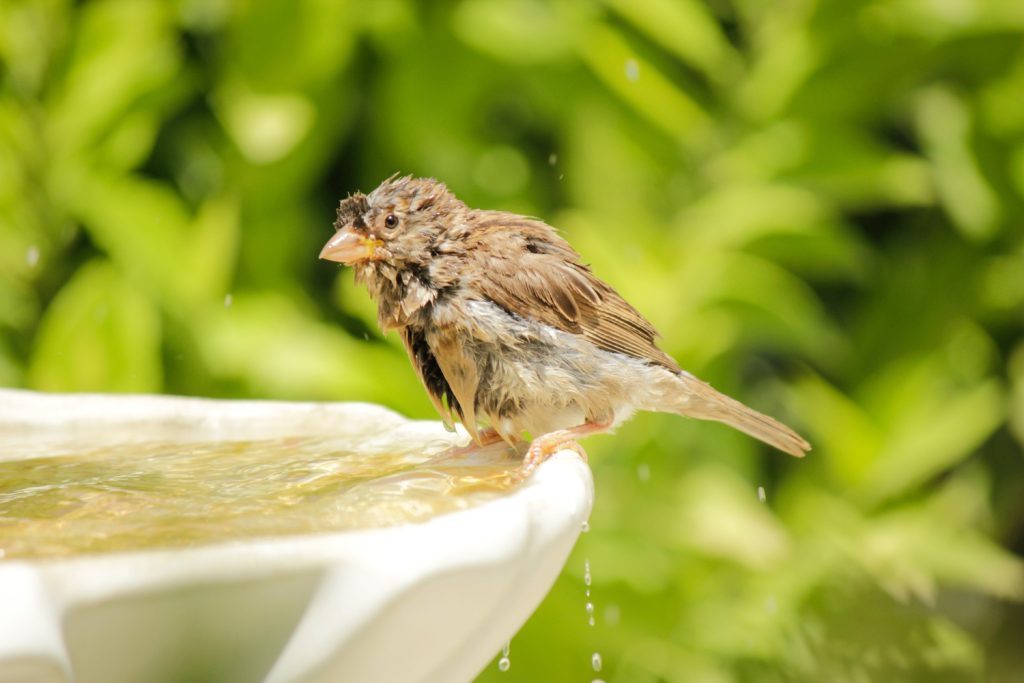
Close observation of backyard birds reveals the spectrum of bathing styles and rituals. Some favor a quick dip and vigorous shake, while others leisurely soak their feathers. During hot spells, expect a flurry of activity as overheated birds seek relief. In winter, birds still appreciate a temperate bath to keep feathers healthy, making heated baths a useful addition. Birds may wait for the perfect moment when conditions feel safest, like mornings and evenings. Social and solitary bathers follow distinctive routines – juncos, for instance, prefer bathing alone. Under optimal conditions, preening and priming sessions can extend long after the initial bath. Understanding these unique rhythms and preferences provides further insight into the avian life sharing your space.
Ideal Bathing Times and Habits
So when do birds themselves seem to prefer bathing during the day? Early mornings tend to see peak bathing activity as birds awaken and prepare for the day. Their ablutions help achieve clean and organized plumage to enable efficient flying and foraging. The soft morning light also allows them to detect potential danger better. Many birds also bathe in late afternoons as temperatures cool, and they settle down for evening roosting. Midday baths are less common, though some species do take a dip on sweltering days. Rain showers, as mentioned, prompt impromptu communal cleansing sessions. Otherwise, birds tend to avoid the harsh midday sun and seek out shade. Providing water sources in both sunny and shaded areas caters to different comfort levels. Paying attention to when your birdbath is most used will reveal the prime times.
Seasonal Shifts in Bathing Patterns
Birds’ bathing habits adapt across seasons as well. In the warmer months, daily baths are important for temperature regulation and happen earlier when the heat is less intense. Cold-hardy birds continue bathing year-round but shift to midday to take advantage of winter’s weak warmth. In migratory species, more bathing occurs before and after travel. Autumn sees increased activity as they prepare their feathers for the journey. Spring brings heightened social bathing as they meet potential mates. Being aware of these seasonal quirks will allow you to understand your year-round visitors better and meet their needs accordingly. Provide multiple clean water sources to accommodate fluctuating populations.
Common Misconceptions About Bird Bathing
Despite their evident enjoyment of it, some pervasive myths exist about how and when birds use birdbaths. A key misconception is that birds do not bathe in winter – but maintaining healthy feathers is still important for retaining body heat. Heated baths in wintertime are used and appreciated. It is also thought they prefer bathing in direct sunlight on open lawns. While this works for some species, others opt for privacy and shade from bushes or indirect light. Not all birds are eager to bathe communally either – solitary bathers will avoid busier times. Being flexible and observant of all bathing preferences will allow for a diversity of visitors. Providing varied options is ideal, rather than relying on these blanket assumptions.
Necessary Maintenance for Hygienic Bird Baths
To ensure the ideal environment for safe bird bathing, certain maintenance practices are essential. Changing the water daily prevents the spread of contaminants like mold or avian flu that can breed in standing water. Every week, thoroughly scrub and disinfect baths to avoid algae build-up. Periodically, using a mild bleach solution removes more stubborn grime. Maintaining proper water levels allows birds of all sizes to bathe comfortably – usually, 1 to 3 inches is optimal. Misting baths or installing drippers mimics natural rainfall birds recognize. In winter, breaking up ice layers provides access. With diligent, birdbath upkeep, you provide sanitary conditions that keep backyard birds returning for their ablutions.
The Delights of Observing Backyard Bathing Birds
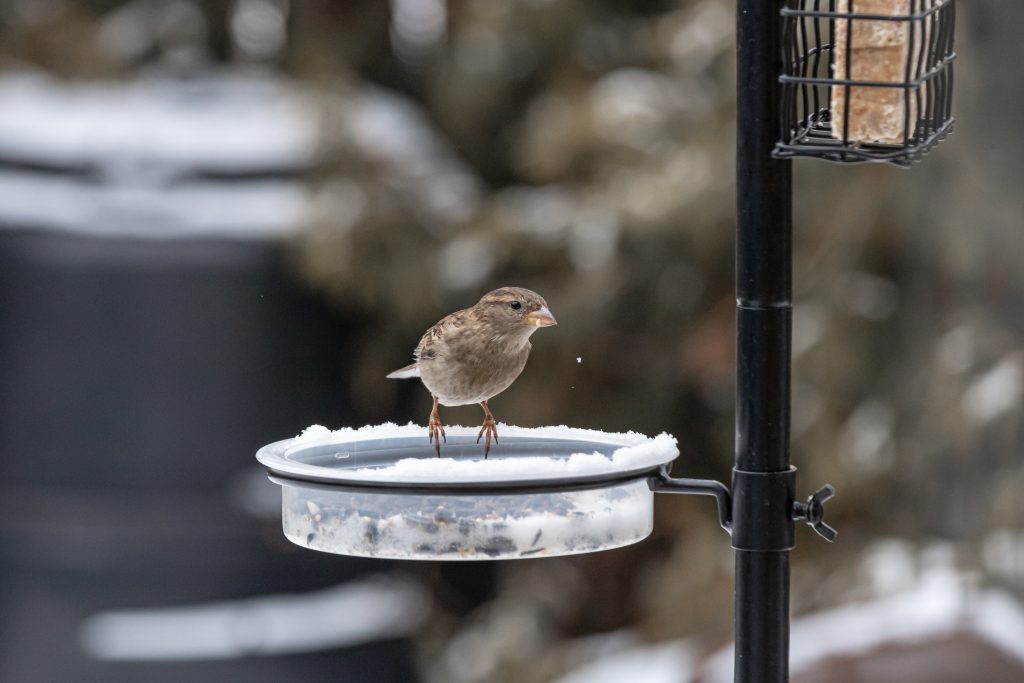
A clean birdbath offers endlessly rewarding opportunities to observe backyard avian life. You may spot fledglings experiencing their first baths and flapping with glee. Distinct personalities also emerge – the bold and the shy bathers. Seasoned birdbath regulars act as guides for newcomers adjusting to the habitat. Sparrows may chatter noisily while thrashing about together. Wrens dive in with incredible speed and efficiency. Such delightful sights provide tranquil moments to watch nature unfold. As birds flock to your oasis, it also reflects your contributions towards supporting local ecosystems. The presence of clean water offers stressed birds comfort and relief amid urbanization.
Understanding Bird Bathing Patterns
Bird-watching enthusiasts know that birds require frequent bathing for healthy feathers and skin. But when do backyard birds prefer to take a dip? Their bathing habits actually follow distinct rhythms and schedules throughout the day and across seasons.
Observing bird bathing behavior reveals fascinating insights into avian daily cycles. This article explores the prime times different species like to bathe and the key factors that influence their aquatic activities. Read on to learn more about when your feathered visitors are most likely to indulge in a refreshing splash!
Climate Conditions That Prompt Bird Bathing
Birds tend to bathe more often under certain environmental triggers. For example:
- Rainfall – Birds are stimulated by the sight and sound of fresh rain to bathe. The dripping rain prompts them to preen and wash.
- Heat – On hot sweltering days, birds will take cooling dips more frequently, especially early and late in the day.
- Drought – Lack of natural water sources during drought makes clean, well-placed birdbaths essential for birds to bathe and hydrate.
Understanding these conditions provides clues into increased bathing behavior based on birds’ instincts to wash in rainy conditions or cool off in the heat.
Key Design Factors for Birdbaths
Providing an optimal birdbath setup involves some careful design considerations:
- Placement – Positioned in an open, elevated area for visibility, but also near trees/bushes for shy birds.
- Materials – Durable materials like concrete or stone with textured surfaces for grip and stability.
- Depth – A shallow basin no more than 2-3 inches deep suits most backyard birds.
- Moving water – Dripping fountains provide extra visual and audio stimulation.
- Cleaning – Weekly scrubbing and disinfecting prevents disease transmission from dirty water.
A well-designed birdbath follows these principles to create an attractive and functional space for diverse bathing styles.
Bird Species and Bathing Habits
Different bird groups exhibit unique bathing styles:
| Bird Group | Bathing Habits |
|---|---|
| Songbirds | Thorough drenching with vigorous flapping |
| Shorebirds | Rapid dipping while running in and out |
| Waterfowl | Leisurely soaking with frequent preening |
| Raptors | Low, swooping passes through water |
Solitary bathers like juncos prefer privacy, while social birds like sparrows bathe communally. Understanding these preferences allows you to accommodate diverse visitors.
What time of day do Birds use Bird Baths and Prime Bathing Times by Season?
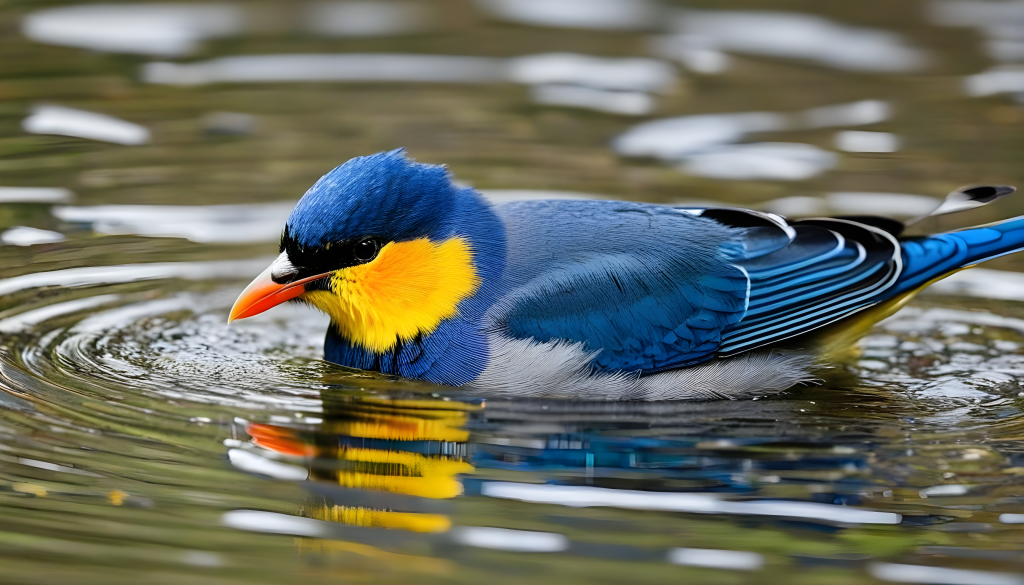
Bird bathing patterns change across the seasons as well:
| Season | Prime Bathing Times |
|---|---|
| Spring | Early morning and late afternoon |
| Summer | Early morning and evening once heat subsides |
| Autumn | Mid-morning and mid-afternoon |
| Winter | Middle of the day when temperatures peak |
Providing clean birdbaths year-round ensures birds have access to water for bathing as seasons and temperatures fluctuate.
Misconceptions About Bird Bathing
Despite their enjoyment of water, some false assumptions exist about bird bathing:
- Birds do bathe in winter – but maintaining feathers is still important for insulation.
- Not all species prefer direct sun – some opt for shade and shelter.
- Solo bathers avoid busier communal times.
Being flexible and observing actual bathing habits will reveal more insights versus relying on blanket misconceptions.
Necessary Birdbath Maintenance
To enable healthy bird bathing, certain maintenance practices are vital:
- Change water daily to prevent disease transmission.
- Scrub and disinfect weekly to control algae and grime.
- Use mild bleach solutions periodically for deeper cleaning.
- Break ice layers in winter to allow access.
- Refill water levels to 1-3 inches depth for all birds.
Proper birdbath upkeep encourages safe visitation by providing clean, fresh water for backyard birds year-round.
The Delights of Birdwatching at Birdbaths
Watching birds bathe and interact at backyard birdbaths provides tranquil joy. You may see:
- Young fledglings splashing in their first baths
- Seasoned adult grooming with fine-tuned care
- Bold and shy birds visit in turns
- Birds socialize and communicate through play
- Migrating birds preparing their feathers for travel
These moments allow for rewarding connections with nature right outside your window!
How often should birds bathe
Imagine fluffy feathers glistening like diamonds in the morning sun. For birds, bath time isn’t just about vanity; it’s a vital part of their health and well-being. But how often should our feathered friends take a plunge?
Nature’s Spa Ritual
While there’s no one-size-fits-all answer, most birds crave daily dips. The cool of dawn is prime time, with a pre-breakfast soak fluffing feathers for flight and helping regulate body temperature. Midday might see a siesta, but the evening brings another flurry of activity as birds cleanse before bedtime, removing dust, parasites, and the day’s grime.
Species Spotlight
Some, like sparrows, prefer quick morning dunks, while robins might relish an afternoon shade bath. Consider your local feathered residents and their natural habits. A shallow dish, gentle misting, or even a sprinkler can be birdbath alternatives, especially for shy species.
Signs of a Soaky Soul
Ruffled feathers, dust buildup, and excessive preening could indicate a bird thirsting for a bath. Offer fresh, clean water in a variety of containers to cater to different bathing preferences. Remember, a happy, healthy bird is a frequent bather!
So, keep your birdbath full and inviting, and witness the daily avian spa ritual unfold. From the morning symphony of splashes to the evening finale of preening, it’s a delightful show, courtesy of nature’s feathered friends.
I hope this article gives you a glimpse into the fascinating world of bird baths and their feathered patrons. Remember, birdwatching is a joy, so keep your birdbath full and enjoy the show!
How often do birds need to bathe
Birds love bathing! Most crave daily dips, preening and fluffing feathers at dawn. ☀️ Some, like sparrows, prefer quick dunks, while robins might enjoy an afternoon shade bath. Offer fresh water in various containers, from birdbaths to gentle misting. A happy, healthy bird is a frequent bather!
Conclusion: what time of day do birds bathe
Providing clean fresh water through a well-designed birdbath offers natural beauty and tranquility. Taking the time to understand birds’ bathing habits reveals fascinating insights into their daily and seasonal rhythms. Early mornings and late afternoons tend to see peak activity in most seasons. Maintaining birdbaths properly encourages healthy feathery visitors to your backyard oasis. Watching their joyful antics in the water is a profoundly rewarding pastime!
Frequently Asked Questions About Backyard Bird Bathing
Why do birds need to bathe regularly?
Frequent bathing helps birds maintain healthy feathers, skin, and plumage. It removes dirt, parasites, excess feathers, and oil buildup. Bathing also helps regulate body heat since birds do not sweat. Social bathing facilitates bird communication and connections.
What are the best times of day to observe bird bathing?
The peak times are early morning as birds awaken and late afternoon as temperatures cool. Bathing prepares feathers for efficient flying and foraging. Evening baths help birds clean up and resettle plumage for sleeping.
How should I design my birdbath setup to attract birds?
Use shallow, textured basins and consider moving water elements like drippers. Position baths in open areas for visibility but also near trees/bushes for shade-loving species. Keep baths clean and well-maintained with routine cleaning and fresh water.
Do migrating birds have different bathing patterns?
Before migration, migratory birds bathe more frequently to prepare feathers for long flights. Upon arriving at seasonal grounds, increased bathing resumes to clean off from journeys. Right before migrating again, preening and bathing intensity increases to ready feathers.
How often should birdbaths be cleaned for proper maintenance?
Empty and refresh the birdbath water daily. Thoroughly scrub and disinfect baths weekly using a bleach solution to prevent algae buildup and disease transmission through dirty water. More frequent cleaning may be needed in warmer months when algae spreads rapidly.
What are some birdbath design tips to attract shy bird species?
Position birdbaths near vegetation like bushes and trees to provide a sense of shelter and safety. Avoid large open lawns that expose bathing birds without any cover. Include more enclosed bathing spaces for solitary birds who avoid crowded communal areas.
Do birds continue bathing behavior in winter months?
Yes, bathing continues year-round for birds to maintain healthy feathers for insulation and warmth. Heated, temperature-controlled birdbaths provide essential access to liquid water in winter when natural sources freeze over. Avoid metal baths that grow too cold.
How does weather impact the frequency of bird bathing?
Rainfall increases bathing as birds forage in fresh rain. Hot days see more frequent cooling dips, especially mornings and evenings. Drought causes a greater dependence on artificial baths when natural water evaporates.
How can I observe backyard birds safely during bathing times?
Position yourself discreetly inside and observe from a window using binoculars or spotting scopes. Limit noise and movement during peak times. Include proper cover around baths so birds feel sheltered as they bathe. Let regular bathing cycles continue without human disruption.
What are some interactive bathing features to engage children?
Consider incorporating fountains or “rain sticks” that allow kids to gently sprinkle water like rainfall. Have kids keep a bird bathing log to monitor activity. Get kids involved in regular birdbath cleaning and maintenance as age-appropriate. Guide them in careful, respectful observation of backyard wildlife.

